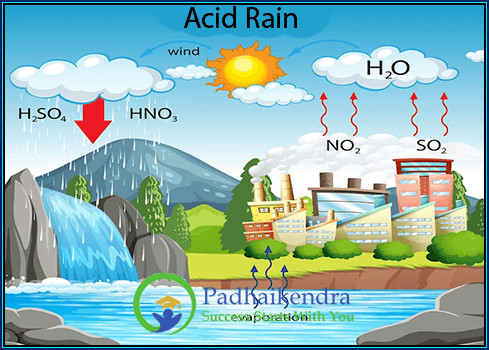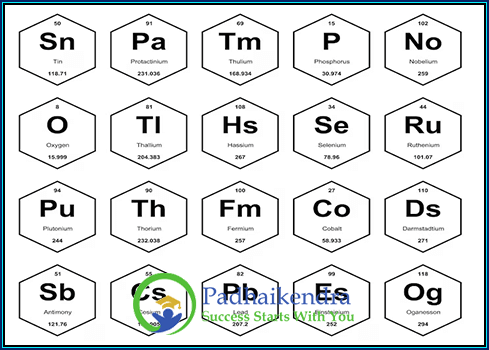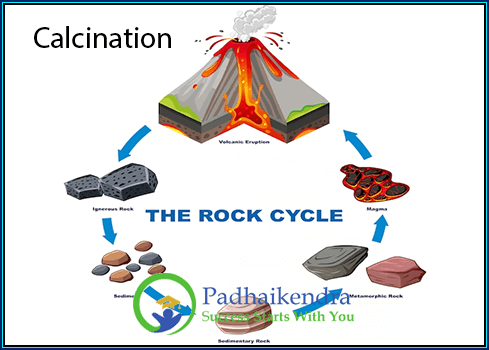What is Isomerism?
Isomerism is the phenomenon in which two or more compounds have the same molecular formula but different structural formulas and different properties. This is mainly because of different structural or spatial arrangements. Isomerism is the existence or possibility of isomers.
Types of Isomerism
There are two main types of isomerism: structural isomerism and stereoisomerism.
Structural isomers
Structural Isomers have the same molecular formula but different structural formulas. This means that the atoms are arranged differently in the molecule. For example, n-butane and isobutane are structural isomers with the molecular formula C4H10. n-butane has a straight chain of carbon atoms, while isobutane has a branched chain.
Stereoisomers
Stereoisomers have the same structural formula but different spatial arrangements. This means that the atoms are arranged in the same order, but they are oriented differently in space. For example, the two enantiomers of 2-butanol are stereoisomers. In one enantiomer, the two methyl groups are on the same side of the molecule, while in the other enantiomer, they are on opposite sides of the molecule.
What are Isomers?
Isomers are molecules or polyatomic ions with identical molecular formulas – that is, the same number of atoms of each element – but distinct arrangements of atoms in space. Isomers do not necessarily share similar chemical or physical properties.
Two main forms of isomerism are structural or constitutional isomerism, in which bonds between the atoms differ; and stereoisomerism or spatial isomerism, in which the bonds are the same but the relative positions of the atoms differ.
Types of Isomers
There are many different types of isomers, but some of the most common include:
Structural Isomers
Structural isomers have the same molecular formula but different structural formulas. This means that the atoms are arranged differently in the molecule. For example, n-butane and isobutane are structural isomers with the molecular formula C4H10. n-butane has a straight chain of carbon atoms, while isobutane has a branched chain.
Stereoisomers
Stereoisomers have the same structural formula but different spatial arrangements. This means that the atoms are arranged in the same order, but they are oriented differently in space. For example, the two enantiomers of 2-butanol are stereoisomers. In one enantiomer, the two methyl groups are on the same side of the molecule, while in the other enantiomer, they are on opposite sides of the molecule.
Geometric Isomers
Geometric isomers are a type of stereoisomers that differ in the arrangement of atoms around double bonds. For example, cis- and trans-2-butene are geometric isomers with the molecular formula C4H8. In cis-2-butene, the two methyl groups are on the same side of the double bond, while in trans-2-butene, they are on opposite sides of the double bond.
Optical Isomers
Optical isomers are a type of stereoisomers that are mirror images of each other and cannot be superimposed. For example, the two enantiomers of 2-butanol are optical isomers. One enantiomer is the mirror image of the other, but they cannot be superimposed on top of each other.
Properties of Isomers
Isomers often have different physical properties, such as melting point, boiling point, and solubility. This is because the different arrangements of atoms in the molecule can affect the way the molecule interacts with other molecules.
Example: n-butane and isobutane have different melting points and boiling points. n-butane melts at -138 degrees Celsius and boils at -0.5 degrees Celsius, while isobutane melts at -163 degrees Celsius and boils at -11 degrees Celsius.
Isomers can also have different chemical properties.
Example: The two enantiomers of 2-butanol can react with different chemicals. One enantiomer can react with a chemical to form a precipitate, while the other enantiomer does not react with the chemical.
Applications of Isomers
Isomers have many different applications in chemistry, biology, and medicine. For example, isomers can be used to create different types of drugs. The different isomers of a drug can have different effects on the body, so isomers can be used to create drugs that have specific effects.
Isomers can also be used to create different types of polymers. Polymers are long chains of molecules, and the different arrangements of atoms in the isomers can affect the properties of the polymer. For example, some isomers of polyethylene are more flexible than others, so they can be used to create different types of plastic.
Types of Structural Isomers
There are several types of structural isomers:
Chain Isomers
Chain isomers have the same molecular formula but different carbon chains. For example, n-butane and isobutane are chain isomers with the molecular formula C4H10.
Position Isomers
Position isomers have the same carbon chain but different functional groups. For example, butanol and 2-butanol are position isomers with the molecular formula C4H10O.
Functional group Isomers
Functional group isomers have different carbon chains and different functional groups. For example, ethanol and dimethyl ether are functional group isomers with the molecular formula C2H6O.
Metamerism
Metamerism is a type of structural isomerism that occurs when two or more compounds have the same molecular formula and functional group but differ in the arrangement of alkyl groups attached to the functional group. For example, the two metamers of 1-butanol are 1-butanol and 2-butanol.
Tautomerism
Tautomerism is a type of structural isomerism that occurs when a compound exists in two or more different forms, called tautomers, that are in equilibrium with each other. The tautomers have different functional groups, but they are rapidly interconverted by a process called tautomerization. For example, the two tautomers of acetaldehyde are acetaldehyde and vinyl alcohol.
Types of Stereoisomers
- Geometric isomers
- Optical isomers
- Diastereomers
- Geometric isomers
Geometric Isomers
Geometric isomers are stereoisomers that differ in the spatial arrangement of atoms around a double bond. They are also known as cis-trans isomers or E-Z isomers.
Cis-Isomers
Cis-isomers have two identical groups on the same side of the double bond. Trans-isomers have two identical groups on opposite sides of the double bond.
For example, the two geometric isomers of 2-butene are cis-2-butene and trans-2-butene. In cis-2-butene, the two methyl groups are on the same side of the double bond, while in trans-2-butene, they are on opposite sides of the double bond.
Optical isomers
Optical isomers are stereoisomers that are mirror images of each other but cannot be superimposed. They are also known as enantiomers.
Optical Isomers
Optical isomers have different physical properties, such as their ability to rotate polarized light. For example, the two enantiomers of 2-butanol are dextrorotatory (they rotate polarized light to the right) and levorotatory (they rotate polarized light to the left).
Diastereomers
Diastereomers are stereoisomers that are not mirror images of each other. They can be either optically active or optically inactive.
Diastereomers have different physical properties than each other and than the enantiomers. For example, the two diastereomers of 3-bromo-2-butanol have different melting points and boiling points.
The type of stereoisomerism that occurs depends on the structure of the compound. For example, geometric isomers can occur when the compound has a double bond. Optical isomers can occur when the compound has a chiral carbon atom. Diastereomers can occur when the compound has two or more chiral carbon atoms.





